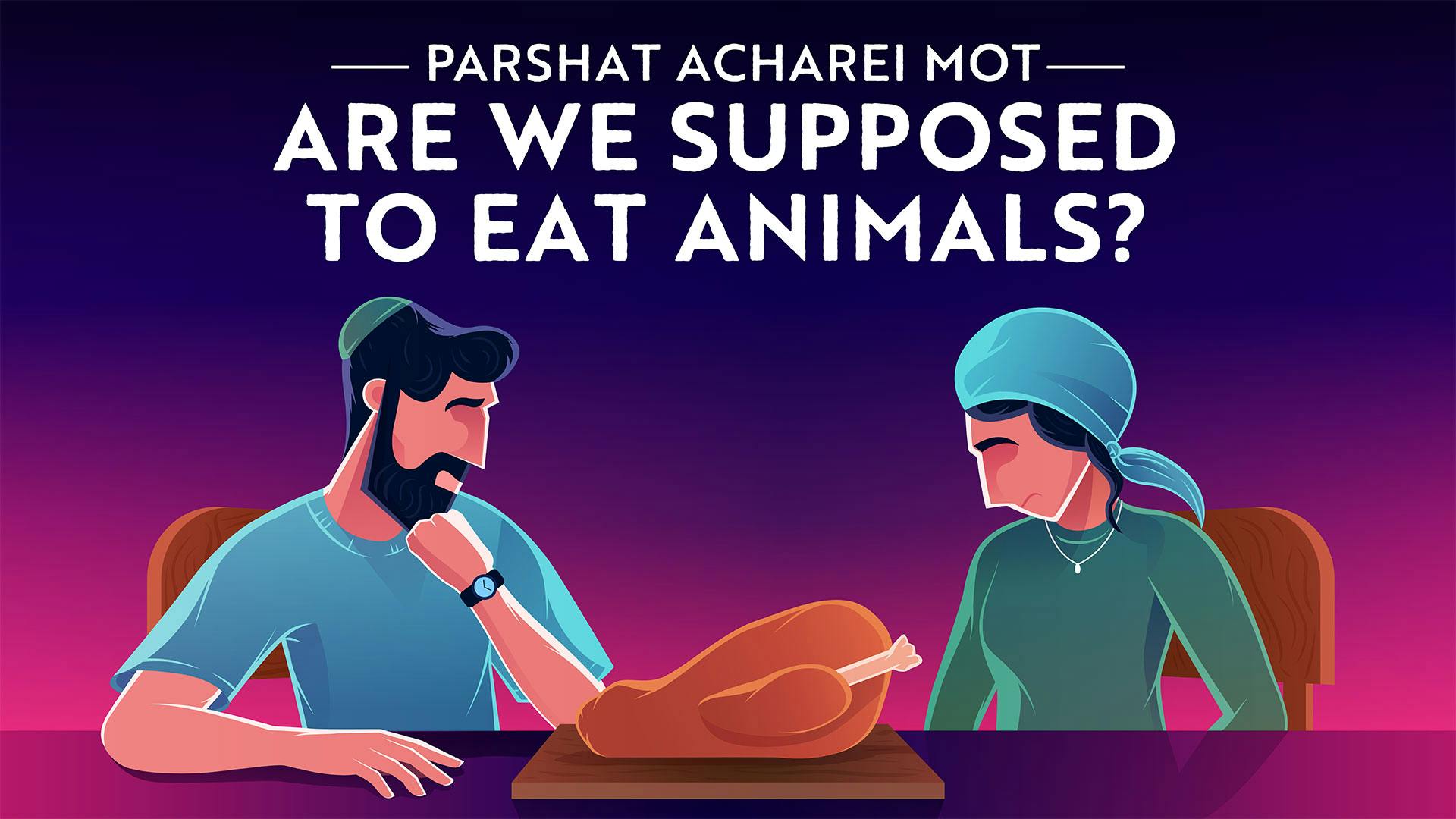Acharei Mot is the weekly Torah portion read on May 10, 2025
Parshat Acharei Mot: Dvar Torah, Summary, Meaning & Torah Portion
Acharei Mot: Leviticus 16:1–18:30
Aaron's two sons are killed for coming too close to the presence of God. We learn about what actions a Priest must perform on Yom Kippur and the laws related to illicit relationships.
What The Bible Says About Eating Meat
Acharei Mot Torah Portion
Acharei Mot Dvar Torah & Meaning
Teacher Guide: The (Surprising) Meaning & Purpose Of Yom Kippur
Teacher Guide
A Teacher’s lesson plan and worksheet for: The (Surprising) Meaning & Purpose Of Yom Kippur
Kedoshim: Social Justice... And Sacrifies?
Printable Guide
A printable parsha guide for our Kedoshim video, "Social Justice... And Sacrifies?"
Parshat Acharei Mot Summary & Commentary
Acharei Mot Torah Portion: Leviticus 16:1–18:30
Parshat Acharei Mot opens with a description of Yom Kippur, arguably the holiest day on the Jewish calendar. How do we observe Yom Kippur? That depends on who's asking! If you're a regular member of the children of Israel, then you've got a strict diet of no eating; no drinking; no washing yourself; no anointing yourself with oil, perfume, or other cosmetics; no marital relations; and no wearing of leather. In addition to the prohibitions, you're meant to spend the whole day in synagogue, praying to God and asking Him to forgive you for your sins.
But what if you are the Kohen Gadol, the High Priest? In that case, you have a markedly different itinerary. As the parsha describes, you are supposed to enact a highly-involved, extremely dramatic, day-long ritual that involves donning special clothing for the day (with multiple "costume changes"), immersing in a ritual bath no fewer than five times, sending away a "scapegoat," and bringing an array of sacrifices to God, including a cloud of burning incense. It is only with this cloud of burning incense that you are permitted to enter in the Kodesh HaKedoshim, the Holy of Holies, the innermost sanctum of the Mishkan(Tabernacle) where God's presence is said to rest, where no man is otherwise allowed to enter.
What's so special about this cloud of incense? If 364 days a year, no person is allowed to enter the Holy of Holies, then why should it be that on Yom Kippur, we make an exception for the High Priest — and what does the cloud of incense have to do with it? (Rabbi Fohrman addresses this question in his video, "The (Surprising) Meaning & Purpose Of Yom Kippur." In addition, he offers an innovative reading of the meaning of the holiday of Yom Kippur that will change the way that you relate to this holiest day of the year. And if you want to dive deeper into the meaning of Yom Kippur, then your next stop needs to be Imu Shalev and David Block's video, "How Do Yom Kippur Rituals Atone For Our Sins?" In that video, they ask the "big question" about sacrifice — I bring an animal before God and kill it on the altar — why is God pleased with that? And how might that change the way that we understand Yom Kippur?)
After Acharei Mot concludes its discussion of the laws of Yom Kippur, we hear a smattering of other laws that all revolve around holiness: laws about how to bring sacrifices, a prohibition on eating the blood of animals, and a prohibition from following in the ways of the Canaanites and the Egyptians (which is succeeded by a long list of gilui arayot, forbidden sexual relations).
Check out the full text of the Parsha here.
Interested in learning more about the upcoming Parshiot? Check out Aleph Beta’s Parsha pages on Kedoshim, Emor, Parshat Behar!
